Importance of Educational Toys in Early Development
Baby educational toys play a vital role in a baby’s growth. They help improve motor skills, cognitive abilities, and social behavior. During the early years, a baby’s brain develops rapidly. Stimulating toys support this development by encouraging exploration and problem-solving.
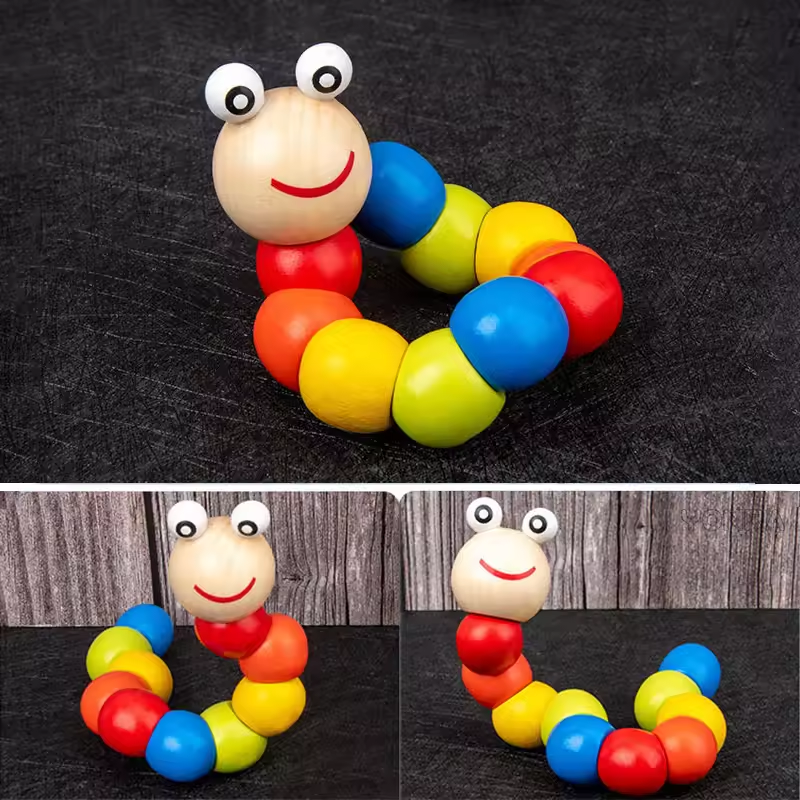
Cognitive Development
Educational toys can improve critical thinking and memory. Puzzle toys, for instance, teach babies to match shapes or colors. These activities strengthen brain connections and improve decision-making skills.
Motor Skills
Toys like stackable blocks and rattles develop hand-eye coordination. Babies learn to grasp, pull, and manipulate objects, enhancing fine and gross motor skills. Each action boosts muscular control and spatial awareness.
Social and Emotional Growth
Interactive toys encourage bonding and communication. Toys that require parental participation also nurture emotional security. Group toys promote sharing and collaboration, helping babies build relationships.
Creativity and Imagination
Educational toys foster imagination. Toys with versatile uses, like building blocks, spark creative ideas. Role-play toys inspire storytelling and encourage self-expression.
Choosing the right baby educational toys during the early stages of growth is crucial. Toys should engage babies while catering to their developmental needs.
Key Features to Look for in Educational Toys
Choosing the right baby educational toys is essential for promoting growth and learning. When selecting toys, consider certain features to ensure they are both engaging and beneficial.
Safety and Durability
Toys should be made from non-toxic materials. They must be durable and safe for babies to chew or handle.
Age-Appropriate Design
Choose toys suitable for your baby’s developmental stage. For newborns, simpler designs work best. For older infants or toddlers, go for toys that challenge their growing skills.
Multi-Sensory Engagement
The best toys activate multiple senses, like touch, sight, and sound. Items with vibrant colors, diverse textures, or gentle sounds hold attention and improve sensory skills.
Encourages Problem-Solving
Look for toys that make babies think. Puzzle toys or stacking games help develop analytical and motor skills.
Promotes Interaction
Interactive toys encourage communication and bonding. Toys that involve parents or group play build social abilities.
Creativity and Versatility
Opt for toys that can be used in multiple ways. Building blocks or role-play items inspire imagination and creativity.
By focusing on these features, you can maximize the benefits of baby educational toys.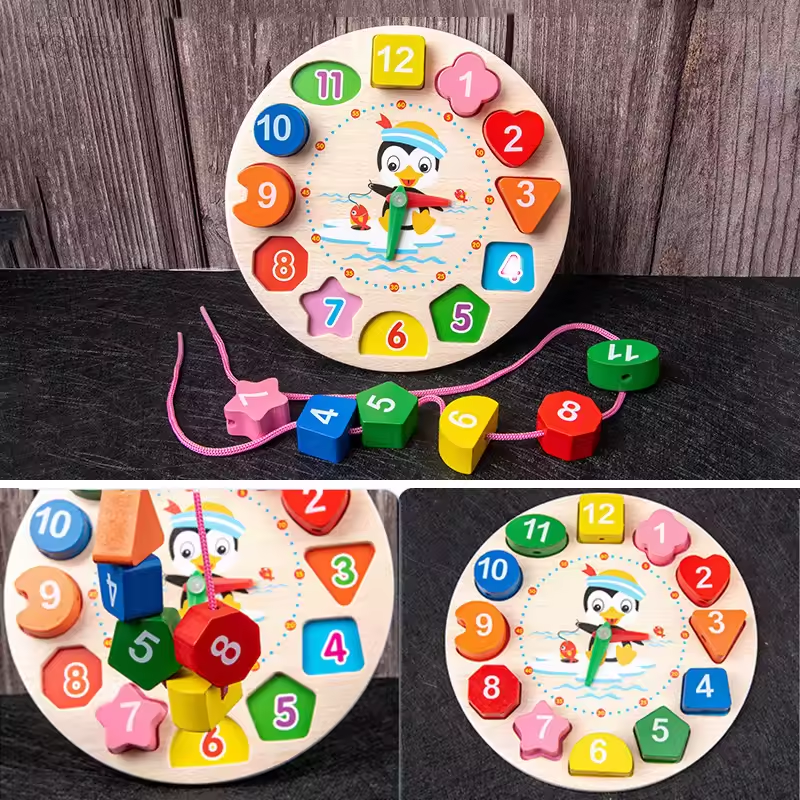
Top Educational Toys for Newborns
Newborns are in their earliest stage of development. Toys designed for them should stimulate their senses and encourage curiosity.
Soft and Colorful Toys
Soft toys made from baby-safe materials are ideal for newborns. Vibrant colors draw the baby’s attention and enhance visual development. Look for toys with simple patterns to avoid overstimulation.
Rattles and Sound Toys
Rattles and sound-making toys help newborns focus on auditory cues. Gentle sounds soothe babies while improving their listening skills. These toys also support early hand movements, as babies attempt to grasp them.
Textured Toys
Multi-textured toys stimulate a baby’s sense of touch. Babies explore textures with their hands and mouths, building sensory awareness. Ensure textures are safe and non-toxic for chewing.
High-Contrast Toys
High-contrast toys with bold black-and-white patterns boost a newborn’s visual processing. Such toys enhance focus and concentration, especially during the first few months of growth.
Activity Mats
Activity mats with dangling toys encourage babies to reach out and explore. These mats also strengthen neck and arm muscles during tummy time.
Soft Books
Soft fabric books introduce newborns to early visual learning. These books often feature simple pictures and engaging textures.
The best educational toys for newborns are simple, sensory-rich, and safe. They lay a strong foundation for early development.
Best Educational Toys for Infants (3-12 Months)
Infants aged 3 to 12 months experience rapid growth and development. Educational toys for this stage should focus on stimulating their senses, improving motor skills, and encouraging exploration. Selecting the right toys can offer endless opportunities for learning and discovery.
Teething Toys
Teething toys soothe babies’ gums and encourage sensory exploration. Choose non-toxic, easy-to-hold options.
Activity Cubes
Activity cubes offer multiple activities in one toy. They teach shapes, colors, and fine motor skills.
Shape Sorters
Shape sorters introduce basic problem-solving. Babies learn shapes and improve hand-eye coordination.
Musical Toys
Musical toys with lights and sounds promote auditory and visual development. They also encourage movement.
Stacking Toys
Stacking rings or cups improve coordination and spatial awareness. These toys support cause-and-effect learning.
Sensory Balls
Soft, textured balls develop tactile senses and gripping skills. They also make tummy time more fun.
Push-and-Pull Toys
Push-and-pull toys encourage crawling and walking. They build strength and gross motor skills.
Soft Blocks
Soft blocks allow safe exploration. Babies can stack, squeeze, and chew them while developing fine motor skills.
Mirror Toys
Baby-safe mirrors fascinate infants, improving self-awareness and visual tracking skills.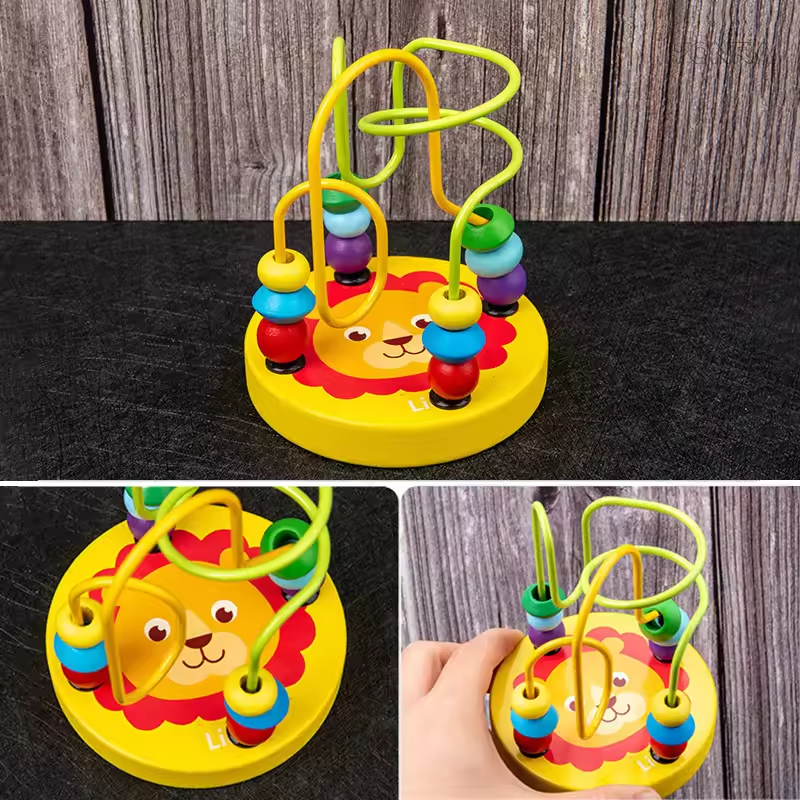
Interactive Books
Interactive books with textures or flaps introduce early literacy. They also teach cause-and-effect reactions.
The best educational toys for infants are simple, safe, and engaging. These toys encourage both mental and physical growth while nurturing curiosity.
Engaging Toys for Toddlers (1-3 Years)
Toddlers are active learners and explorers. Educational toys for this age should support their growing abilities. These toys can build motor skills, ignite creativity, and enhance problem-solving capabilities. Choosing engaging toys can help toddlers learn while having fun.
Building Blocks
Building blocks are versatile and encourage creativity. Toddlers can stack, sort, and design structures, enhancing hand-eye coordination and imaginative play.
Pretend Play Sets
Role-play toys like kitchen sets or toolkits inspire storytelling and creativity. These toys teach real-world concepts and support social skills through imaginative interactions.
Push-and-Ride Toys
Push-and-ride toys improve movement and balance. They help toddlers build leg muscles and develop coordination while exploring their environment.
Puzzle Toys
Simple puzzle toys introduce problem-solving concepts. Matching shapes and colors boosts critical thinking and fine motor skills.
Musical Instruments
Toy drums, xylophones, or keyboards promote auditory learning and coordination. They encourage toddlers to explore sound and rhythm creatively.
Art Supplies
Non-toxic crayons, markers, and coloring books inspire self-expression. Art activities encourage creativity and improve fine motor control.
Sorting and Counting Toys
Toys with numbers, shapes, or colors teach basic math and organization skills. Sorting exercises develop focus and improve early cognitive abilities.
Interactive Storybooks
Books with sounds, textures, or flaps enhance literacy and sensory exploration. These books encourage parent-child interaction and storytelling.
Outdoor Toys
Balls, chalk, or sand toys promote physical activity and outdoor exploration. Such toys nurture curiosity and social play.
The best toys for toddlers combine learning with fun. They should be safe, colorful, and easy to handle. Educational toys for toddlers lay the groundwork for lifelong skills while entertaining young minds.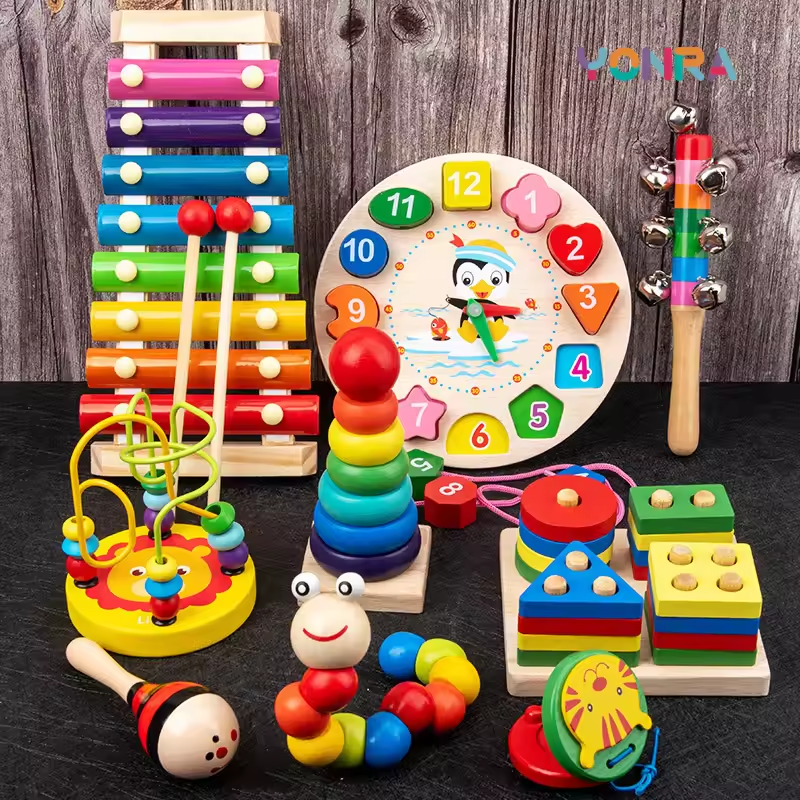
DIY Baby Educational Toy Ideas
Creating your own baby educational toys is simple and cost-effective. DIY toys can be tailored to your baby’s developmental stage and interests. Here are some fun and easy ideas:
Sensory Bottles
Fill clear plastic bottles with water, glitter, beads, or small items. These bottles stimulate a baby’s visual and auditory senses. Seal them tightly to ensure safety.
Fabric Squares
Cut soft fabrics into squares of various textures. Use cotton, fleece, or felt. These help babies explore different textures and improve their sense of touch.
Sock Puppets
Transform old socks into playful characters. Add eyes, a nose, and yarn for hair. Sock puppets encourage storytelling and creativity.
DIY Stacking Cups
Repurpose plastic cups into stacking toys. Let babies stack, nest, and explore. This boosts hand-eye coordination and spatial awareness.
Homemade Rattles
Fill small, sealed containers with rice, beans, or lentils. Shake them to create sounds. These rattles enhance auditory skills and motor control.
Cardboard Shape Sorter
Cut shapes like circles or squares into a sturdy box. Babies can fit items through the matching holes. This promotes problem-solving and fine motor skills.
Ribbon Pull Toy
Thread colorful ribbons through holes in a small box. Tie knots to keep them secure. Babies enjoy pulling the ribbons, aiding hand strength and curiosity.
Sensory Bags
Fill sealable bags with paint, glitter, or small objects. Let babies squish and explore the textures. Sensory bags engage touch and visual exploration.
Homemade Puzzle
Cut a picture into large easy-fit pieces. Use cardboard or thick paper. This helps babies build logical thinking and coordination.
Creating DIY baby educational toys is rewarding. Use everyday items to craft toys that are safe, fun, and educational.
Tips for Choosing Age-Appropriate Toys
Selecting age-appropriate baby educational toys ensures your child’s safety and supports their development. Each stage of growth comes with unique needs and abilities. Choosing the right toys for the right age maximizes learning and fun.
Understand Developmental Milestones
Learn about key milestones for your baby’s age. Newborns need sensory-stimulating toys, while toddlers benefit from problem-solving and creative toys. Matching toys to milestones ensures relevance and effectiveness.
Check Age Recommendations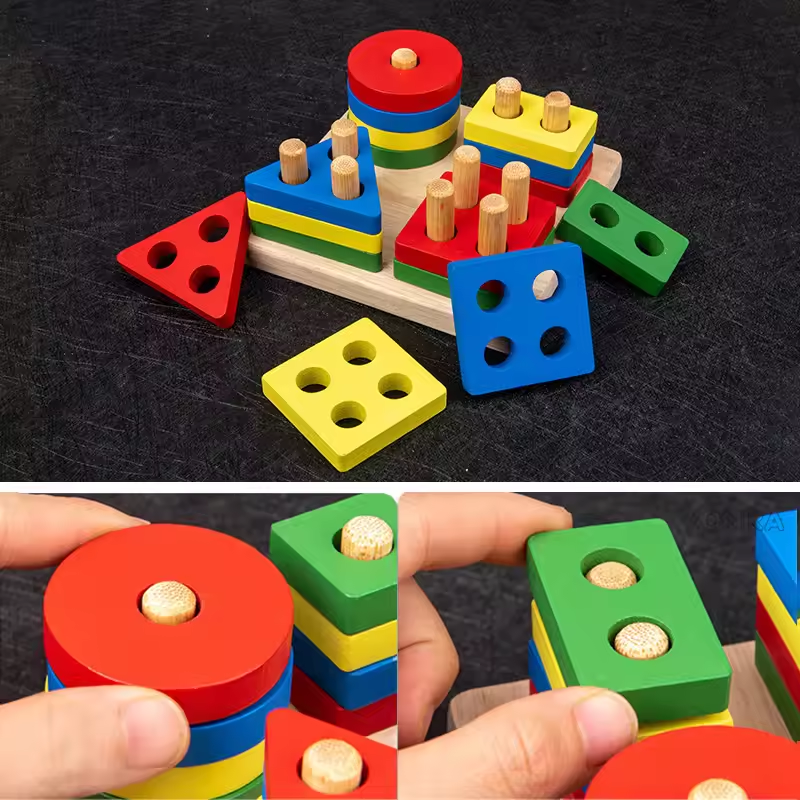
Toy manufacturers often label products with age guidelines. Follow these to choose toys suited to your baby’s stage. Avoid toys meant for older children as they can pose safety risks.
Begin with Simple Toys
Start with basic toys for younger babies. Soft, colorful items that engage sight or sound work best for newborns. As children grow, introduce more complex toys like puzzles or interactive sets.
Keep Engagement in Mind
Pick toys your child will enjoy and interact with. Toys that match their interests will hold attention longer. Observe what captures their curiosity to guide your choices.
Allow Room for Growth
Choose toys that adapt as your baby learns. Toys with multiple uses or adjustable levels of difficulty support continuous development. This helps extend play value over time.
Balance Learning and Fun
Opt for toys that make learning enjoyable. Avoid overwhelming babies with complex toys too early. The best toys teach skills while entertaining your child.
By following these tips, you can pick toys that fit your child’s developmental stage perfectly. Suitable toys encourage growth, creativity, and joy at every age.
Safety Considerations for Baby Educational Toys
Ensuring the safety of baby educational toys is crucial. Unsafe toys can harm your baby’s health and development. Careful evaluation helps create a secure play environment. Below are vital safety tips to consider:
Choose Non-Toxic Materials
Always check if toys are made of non-toxic and BPA-free materials. Babies tend to mouth toys often, so they must be chemical-free.
Avoid Small Parts
Toys for babies under 3 years should not have small detachable parts. Small parts pose choking risks and must be avoided entirely.
Inspect for Sharp Edges
Ensure the toy has no sharp edges or rough surfaces. Smooth, rounded edges prevent scratches or injuries.
Verify Durability
Toys should withstand rough use without breaking or releasing harmful fragments. Weak toys can splinter and become unsafe for your child.
Check for Secure Stitches
For soft toys, double-check stitching to prevent stuffing or small pieces from coming loose. Loose fibers can be hazardous if swallowed.
Stay Updated with Recalls
Keep track of product recalls to avoid unsafe toys. Subscribe to toy safety notifications for your region.
Test Battery Safety
If a toy uses batteries, ensure the battery compartment is secure and childproof. Loose batteries can lead to choking or poisoning.
Supervise Play
Always supervise your baby during play. While toys may be safe, proper monitoring ensures immediate action in unforeseen situations.
Read Labels and Warnings
Pay attention to manufacturer age guidelines, warnings, and care instructions for safe usage.
Avoid Strings or Cords
Toys with long strings or cords can cause strangulation risks. Ensure such elements are kept away from infants.
Following these safety guidelines ensures a worry-free playtime for your baby. Always prioritize safety when selecting educational toys.